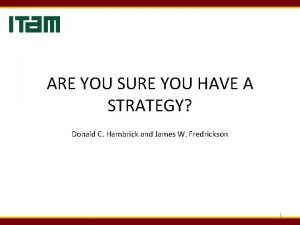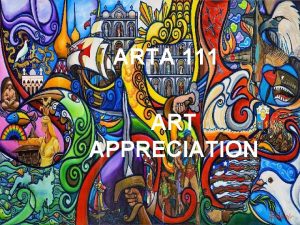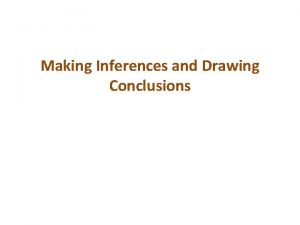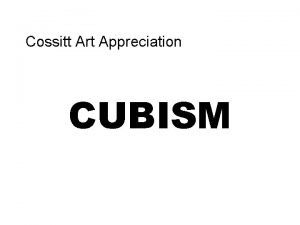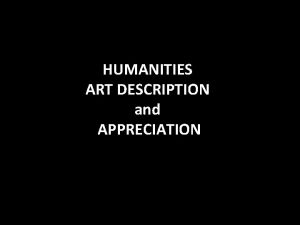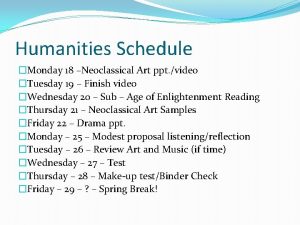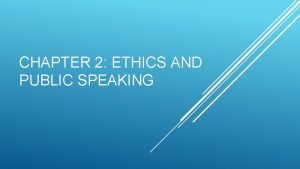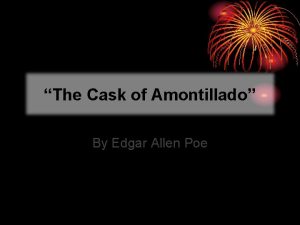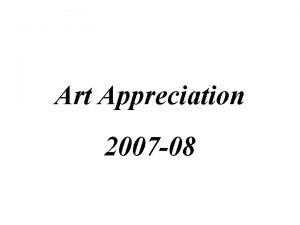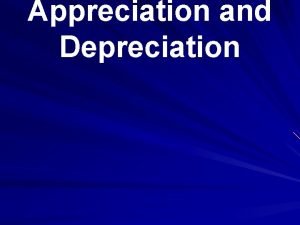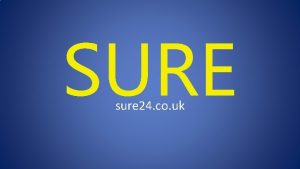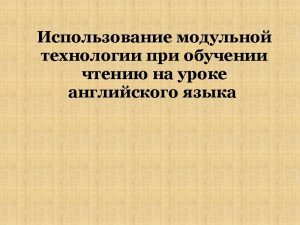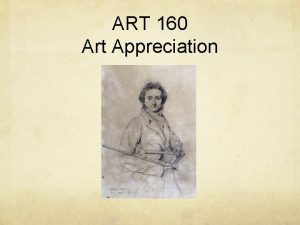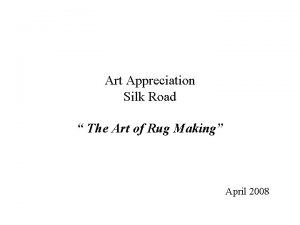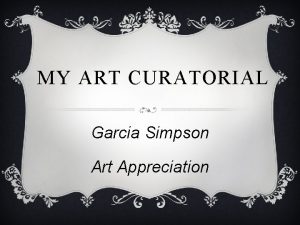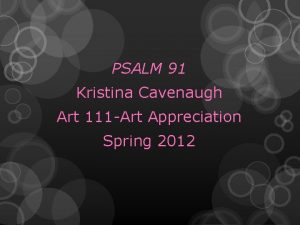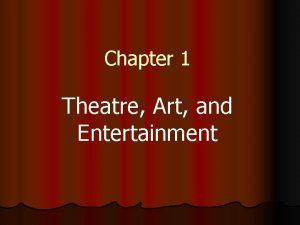Art Appreciation Tuesday Make sure you have good


























- Slides: 26

Art Appreciation- Tuesday: • Make sure you have good notes on all the basic terms (on a blank sheet of paper), we will have an open-note quiz on this THURSDAY. • Make sure you are in class tomorrow- we will be doing a quick DARKROOM PROJECT. • Open Note Quiz on camera terms and functions on THURSDAY. • Make sure you are current with projects, writings and journals/ websites. Pick up graded journals on the cutting board by my desk.


The forerunner of the camera: The Camera Obscura • Translates to “dark room” • A dark chamber or room with a hole (later a lens) in one wall, through which images of objects outside the room were projected on the opposite wall.

The camera obscura was initially used as a drawing aid:

Camera Obscura Diagram:

Camera Obscura concept used in a room in a house:

The dilemna… Although the camera obscura was a great tool for projecting an image, the problem was that there was not a solution for making the image permanent.

Who’s Who? Photography contributors and their advancements in the field of photography…

Joseph Niepce • Joseph Niepce was credited for producing the world’s first photograph in 1826 • An 8 -hour exposure was needed to create the photograph • Although far from perfect, this represented a milestone in the advancement of art

The World’s First Photograph Joseph Niepce - 1826

Louis Daguerre • 1837 - Recorded an image that was clear and sharp • Exposure lasted 10 – 20 minutes • Used methods others could easily duplicate • Named his process: Daguerreotype One drawback: the image is a POSITIVE- and only one print can be made

Mathew Brady • Worked with a “negative” image with a reverse of white and black values • This allowed for unlimited multiples to be printed! • Famous for his portrait of Abraham Lincoln

Julia Margaret Cameron • • Use of strong contrast of dark and light Emphasis on the head and face A soft – faintly blurred – focus Fondness for a profile view – as we see in the portraits below:

George Eastman • Founded the Kodak company, which was once widely recognized for quality photographic supplies • In 1888 introduced roll film, which revolutionized the photo process. This meant that instead of plates and sheets, film could be bought in rolls and made more accessible to the general public

Working with film- The Darkroom • A “dark” space generally set up with yellow or red lights. • Enlargers are used to hold film, and project an image onto light sensitive paper. • When light filters through the “negative” of the film and hits light sensitive paper, a “positive” print is created. • Paper passes through a set of chemicals- and “voila!”, a print is made!

Dorothea Lange • Worked for the Farm Security Administration (FSA) to record conditions across the nation • Devoted her attention to migrants who had been uprooted from their farms during the Depression • Created a photograph that touched the hearts of the world: Migrant Mother (1936)

Henry Robinson • Experimented with artistic capabilities of photography • Used photographs with his audience in mind • Created a scene by creating a composite of five separate negatives • Wanted to tell a story through the use of actors

Alfred Stieglitz • Applied an approach of “pure” or “straight” photography • Considered it a point of honor not to crop or manipulate a photo • Emphasis on formal values and faithfulness to the essence of the medium

Ansel Adams • Known for his photos of nature • Stressed the need to consider the finished composition in advance • Practiced photography as an art

Advancements with cameras:

“Instant Photography” with the Polaroid Camera that produced prints from the camera in 60 seconds

The age of the small camera. Precision German Cameras

The electronic flash- the beginning of an era of ultra high-speed exposures

Color Film

The Digital Revolution… • Introduction of CCD sensors to record an image- replacing film and changing the process of photography. • Based on the revelation of taking a picture and seeing it immediately on the camera. • Began to work with image editing programsmost significantly- Photoshop. • Further challenged the idea of image editing vs. the photographers ability to capture the image without the need for manipulation.

And now- something kinda funky. Darkroom Process Combined with Digital Process: • Photographers with the “Indiegogo project” are coming up with creative methods of producing images using a smartphone that are developed with traditional darkroom techniques. • Check out this cool video: • http: //vimeo. com/73611579
 Are you sure you have a strategy
Are you sure you have a strategy Art appreciation introduction
Art appreciation introduction Description of art appreciation
Description of art appreciation 4 steps in art appreciation
4 steps in art appreciation You are good you are good when there's nothing good in me
You are good you are good when there's nothing good in me Making inferences and drawing conclusions
Making inferences and drawing conclusions I am sure you have heard something like
I am sure you have heard something like To have a friend you must be a friend
To have a friend you must be a friend The triangle shirtwaist factory fire commonlit answer key
The triangle shirtwaist factory fire commonlit answer key Music appreciation elements of music
Music appreciation elements of music What is cubism in art appreciation
What is cubism in art appreciation Hum 1 arts appreciation house rules
Hum 1 arts appreciation house rules Architecture in art appreciation
Architecture in art appreciation Description
Description Art discussion questions
Art discussion questions Humanities art appreciation ppt
Humanities art appreciation ppt You are good and your love endures
You are good and your love endures Good morning nice to see you
Good morning nice to see you Presenting another person's language or ideas as one's own.
Presenting another person's language or ideas as one's own. How did montresor know that the house would be empty?
How did montresor know that the house would be empty? Stay home good morning
Stay home good morning I have not rejected you
I have not rejected you Good deeds good thoughts
Good deeds good thoughts Good morning
Good morning Good afternoon teacher
Good afternoon teacher Cómo se dice buenas tardes
Cómo se dice buenas tardes Epping forest community church
Epping forest community church
